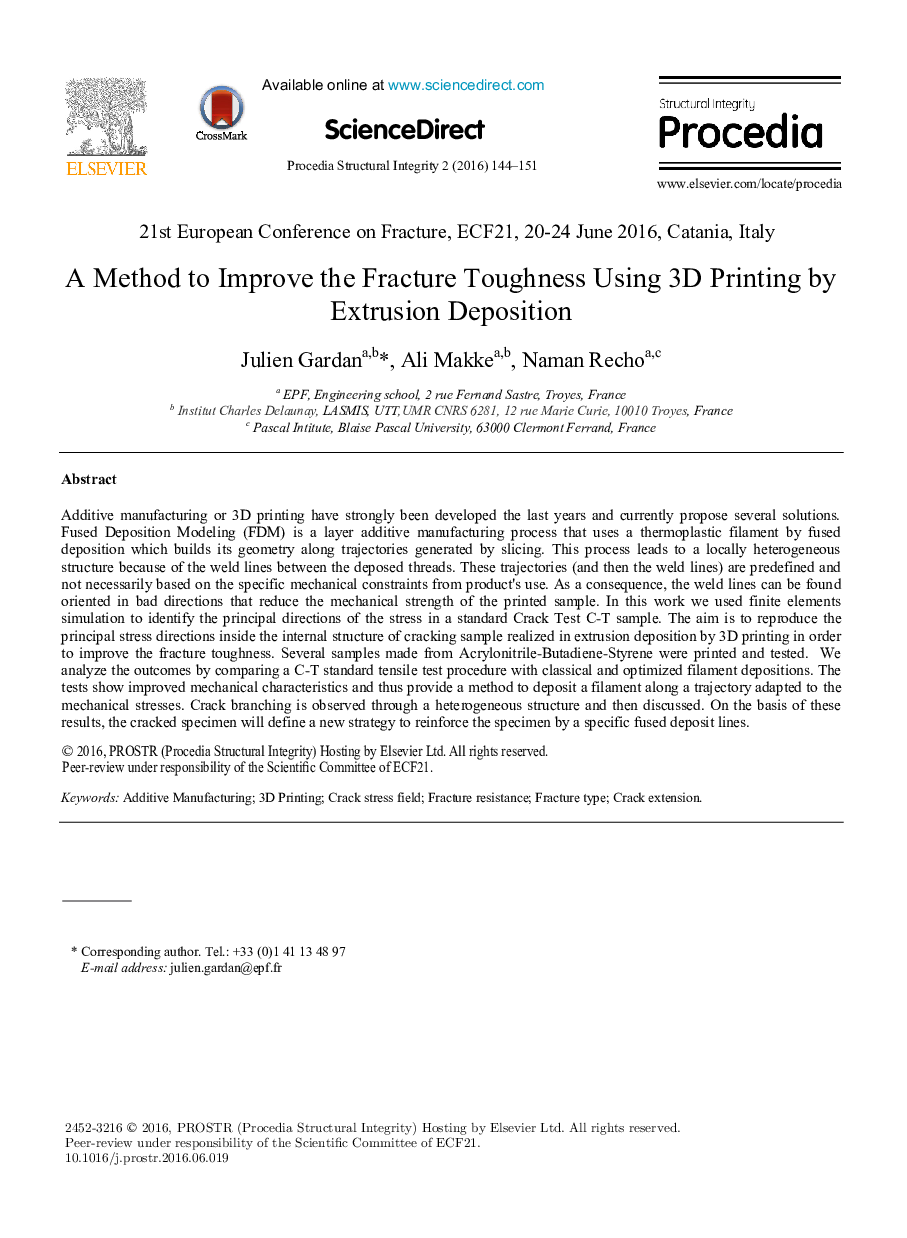| Article ID | Journal | Published Year | Pages | File Type |
|---|---|---|---|---|
| 1558660 | Procedia Structural Integrity | 2016 | 8 Pages |
Additive manufacturing or 3D printing have strongly been developed the last years and currently propose several solutions. Fused Deposition Modeling (FDM) is a layer additive manufacturing process that uses a thermoplastic filament by fused deposition which builds its geometry along trajectories generated by slicing. This process leads to a locally heterogeneous structure because of the weld lines between the deposed threads. These trajectories (and then the weld lines) are predefined and not necessarily based on the specific mechanical constraints from product’s use. As a consequence, the weld lines can be found oriented in bad directions that reduce the mechanical strength of the printed sample. In this work we used finite elements simulation to identify the principal directions of the stress in a standard Crack Test C-T sample. The aim is to reproduce the principal stress directions inside the internal structure of cracking sample realized in extrusion deposition by 3D printing in order to improve the fracture toughness. Several samples made from Acrylonitrile-Butadiene-Styrene were printed and tested. We analyze the outcomes by comparing a C-T standard tensile test procedure with classical and optimized filament depositions. The tests show improved mechanical characteristics and thus provide a method to deposit a filament along a trajectory adapted to the mechanical stresses. Crack branching is observed through a heterogeneous structure and then discussed. On the basis of these results, the cracked specimen will define a new strategy to reinforce the specimen by a specific fused deposit lines.
